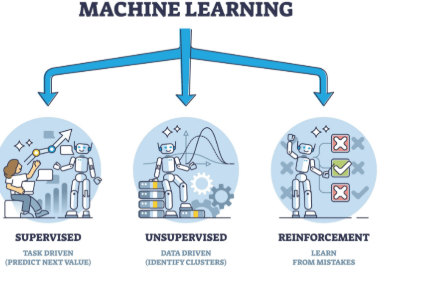Machine learning (ML) is one of the most transformative technologies of our time, powering everything from voice assistants and recommendation engines to fraud detection systems and self-driving cars. As a subset of artificial intelligence (AI), machine learning enables computers to learn from data and improve their performance over time without being explicitly programmed.
In today’s digital world, the ability to analyze vast amounts of data and make intelligent decisions is critical for both businesses and society. Machine learning is at the core of this revolution.
What is Machine Learning?
At its core, machine learning is a method of data analysis that automates the building of analytical models. Instead of following static instructions coded by humans, a machine learning system uses algorithms to identify patterns in data and make predictions or decisions based on that information.
For example, when you use Netflix, the platform recommends shows based on your previous viewing history. This personalization is made possible by machine learning algorithms analyzing your behavior and comparing it with others who have similar tastes.
Types of Machine Learning
There are three main types of machine learning:
- Supervised Learning
In supervised learning, the model is trained on a labeled dataset, meaning that each training example is paired with the correct answer (output). The algorithm learns to make predictions based on this data. It’s commonly used for tasks like spam detection, image classification, and credit scoring. - Unsupervised Learning
Unsupervised learning deals with unlabeled data. The algorithm tries to find hidden patterns or intrinsic structures in the input data. It is used in clustering, anomaly detection, and market segmentation. - Reinforcement Learning
In reinforcement learning, an agent learns by interacting with an environment. It receives rewards or penalties based on its actions and aims to maximize the cumulative reward over time. This type of learning is used in robotics, gaming, and real-time decision-making systems.
Real-World Applications
Machine learning is already embedded in many aspects of our daily lives:
- Healthcare: ML is used for disease prediction, medical imaging analysis, and personalized treatment plans.
- Finance: Algorithms detect fraudulent transactions, assess credit risk, and automate trading.
- Retail: ML enables product recommendations, customer behavior analysis, and inventory forecasting.
- Transportation: Self-driving cars rely on ML to interpret sensor data and make driving decisions.
- Marketing: Companies use ML to analyze customer data, optimize ad targeting, and improve user engagement.
Challenges of Machine Learning
Despite its advantages, machine learning is not without challenges. Some key issues include:
- Data Quality: ML systems are only as good as the data they are trained on. Inaccurate or biased data can lead to flawed models.
- Interpretability: Many advanced models, especially deep learning networks, act as “black boxes,” making it difficult to understand how they make decisions.
- Ethical Concerns: ML can unintentionally reinforce societal biases or be used unethically, raising concerns around fairness, transparency, and privacy.
The Future of Machine Learning
As data generation increases and computational power grows, machine learning will continue to evolve. Trends such as explainable AI, federated learning, and autoML (automated machine learning) are making ML more accessible and transparent. Additionally, the integration of ML with edge computing and IoT devices is expanding its reach beyond traditional computing environments.
Conclusion
Machine learning is reshaping industries and redefining how we interact with technology. As it becomes more advanced and widespread, it will unlock new opportunities and challenges. Understanding how it works—and how to use it responsibly—is essential for anyone engaging with today’s digital world.



